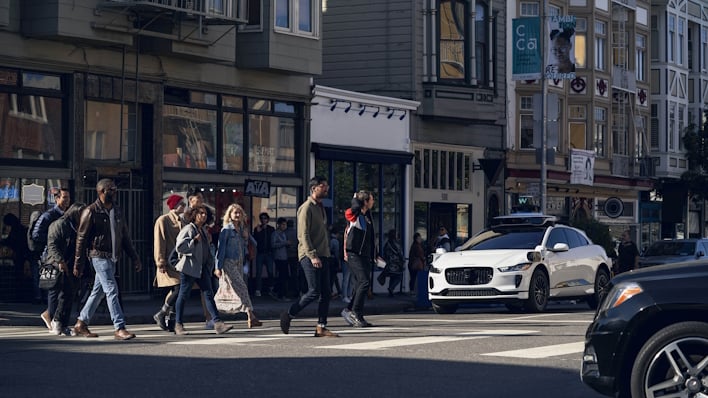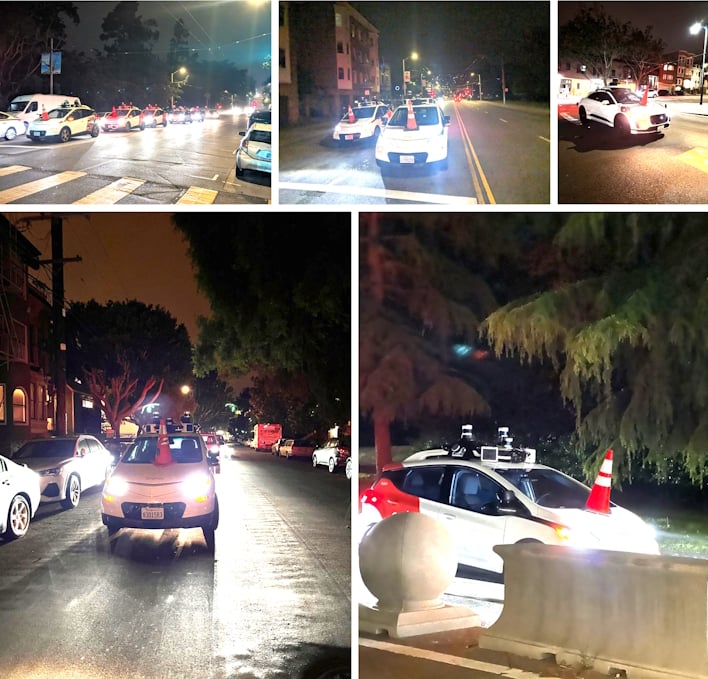Why Protestors On E-Bikes Are Using Traffic Cones To Stop Self-Driving Cars

Over the last several years, self-driving vehicles have become more prevalent as the technology has improved. Of course, though, it is not a perfect system, and as such, the vehicles need live training to get better. The heart of where this is happening is San Francisco, where Cruise, a company owned by GM, and Waymo, a subsidiary of Alphabet, formerly Google, are testing and developing autonomous vehicles.
Previously, Cruise would have run 100 cars during the day and 300 at night to test its systems, but NPR reports that the California DMV made the company cut that in half after an autonomous vehicle hit a firetruck last week. This is one small instance of the problems that the anonymous activist group ‘Safe Street Rebel’ claims are plaguing San Francisco. Between recorded accidents, obstruction of first responders, and a general dislike of San Francisco being used as a testing ground, the Safe Street Rebel group may have a decent cause for concern, and you can see some of this in the NBC video above.

As such, the group has found that simply dropping a regular road traffic cone on the hood of these autonomous vehicles effectively immobilizes them until someone can remove the cone. This low-tech solution to a high-tech problem is somewhat amusing, but it does raise the concern that these vehicles may not be up to snuff and that everyday objects might cause erratic behavior that you would not see from a human driver.
On the other hand, the NPR report also highlights that these self-driving cars are programmed to be conservative so as to not cause safety issues, even though that may be the opposite of what is happening. It should also be noted that these vehicles are still claimed to be safer than those with human drivers, and statistics suggest that would be the case. The California DMV has received 92 reports of autonomous vehicle incidents this year and 637 autonomous vehicle collision reports to date. Of course, this does not account for traffic jams or incidents with first responders, but nevertheless, these vehicles are safe for the most part.
At the end of the day, driverless vehicles are not likely to be going anywhere; it is simply a matter of improving the technology to a point where there are fewer incidents, such as those with which the Safe Street Rebel group takes issue. Further, perhaps more testing should happen in closed environments, but perhaps that is what things like Google’s city development plans are for, too.

